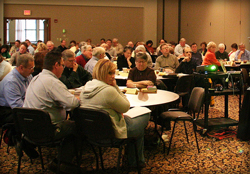The Connected Couple: Information Behavior in Online Dating
A Couples Communication Style Reveals How Well They Are Doing

Gina Kessler Lee (MLIS, 2013) became interested in looking more closely at what appears to be a gap in the research while she was a student at the iSchool.
“People have studied the information behavior of individuals, of small working groups, and of whole communities, but I noticed there wasn’t a lot about couples. Why hasn’t there been a model of how couples exchange information? When you are living with someone or engaging with someone so closely for such a long period of time, how does your information behavior change and how does that affect your relationship?”
Lee was in part inspired by her own experience. “Over the course of my 11 year relationship with my now husband, I’ve seen how our information behavior has changed over time and how rich and complex it is, as well as how problematic it can be at times.”
According to Lee, a lot of people in psychology and family therapy have studied communication between couples, but information behavior research has not addressed this. Her paper, written with Professor Karen Fisher and fellow student Ekaterini Papadopoulou, proposes a general framework from the couple’s perspective.
The model comprises six elements–context, seeking, storing, managing, sharing, and barriers–as they occur over five stages in a relationship, from when the couple meets, to learning each other’s information behavior, merging information taxonomies, establishing transactive memory, and, eventually, the couple’s dissolution, when shared information is lost.
One of the theories the paper draws on is that of transactive memory, developed by Daniel Wegner, a Harvard psychologist. “His idea is that people in groups end up sharing information responsibilities,” Lee explains. “Combined, this creates a kind of shared mind, with different people taking the responsibility of remembering different parts of a project. When they are together, they have a complete perspective. When they are apart, they may run into problems.”
The framework doesn’t just apply to couples in a romantic relationship, but to people who work together on projects in a business environment or creative collaboration. The information behavior research is the same: understanding how people need, create, seek, store and share information, and what happens to this information when someone leaves the relationship. Issues of power and balance emerge throughout; and information poverty can exist then too, especially in instances of abusive situations.
Online dating–an emerging research area in iSchools–is highly relevant to this paper.
“How you get into a long term relationship for many people these days is through online dating,” according to Professor Fisher. “One angle that we are taking to investigate dyadic information behavior is to ask what do people want from online dating? Our hypothesis is friendship, information about daily life, and socializing, someone to do things with–the romance might come later. We’ll get to study how people come together, the early part of our model.”
The complete paper, “To love, honor, and inform from this site forward: A model of dyadic information behavior in online-initiated relationships” is available here. Interesting to think about how A Couples Communication Style Reveals How Well They Are Doing.
